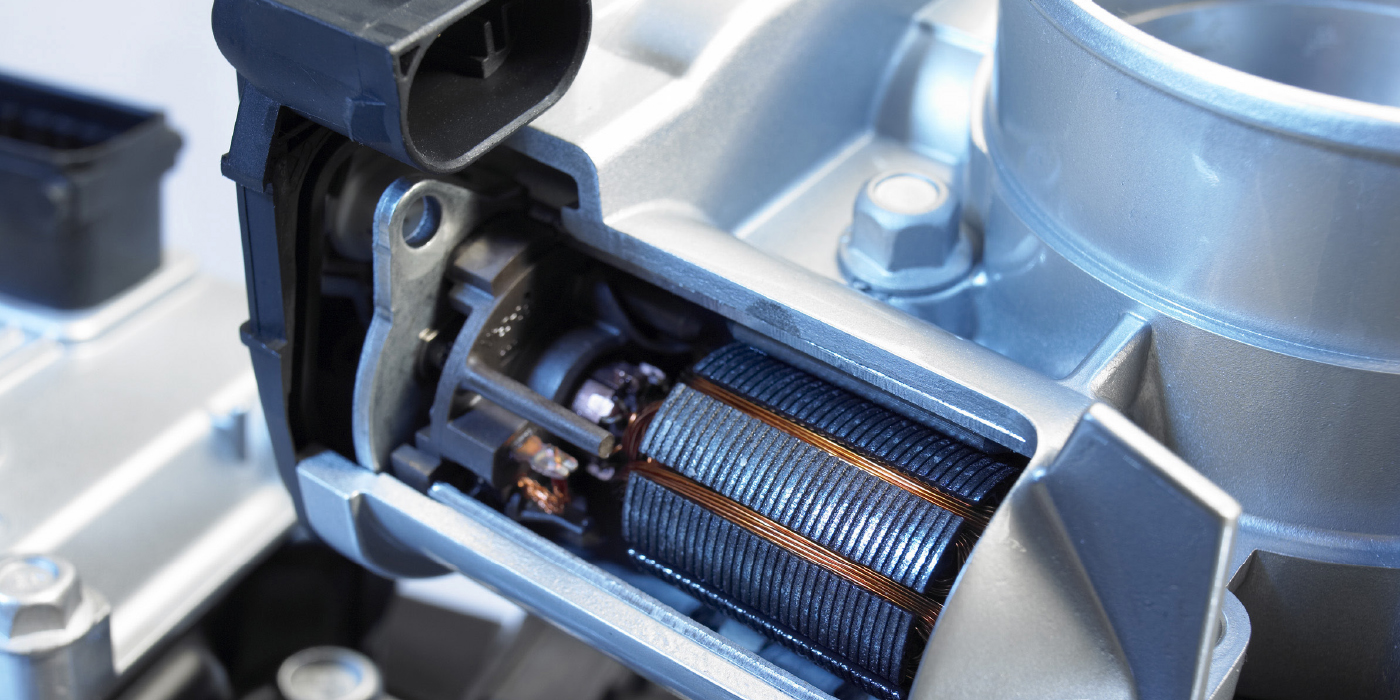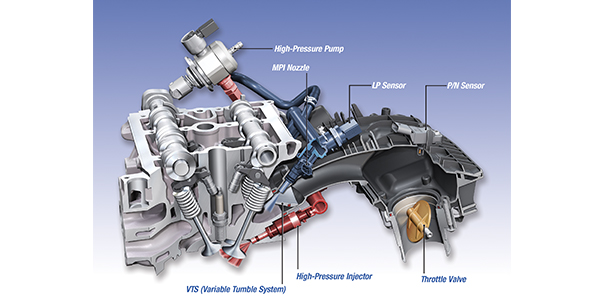
It is easy to manage fuel when compared to managing air. First, there is approximately 14 times more air than fuel in a running engine. Second, air reacts more to temperature and humidity than does fuel. Third, air can behave in strange ways under vacuum and pressure.
With fuel, all the engine control module has to do is change the open time of the injector and regulate the pressure at the rail. Controlling air is a more complicated process. But, like direct injection, modern engines have become much better at delivering air in the proper amount and pattern.
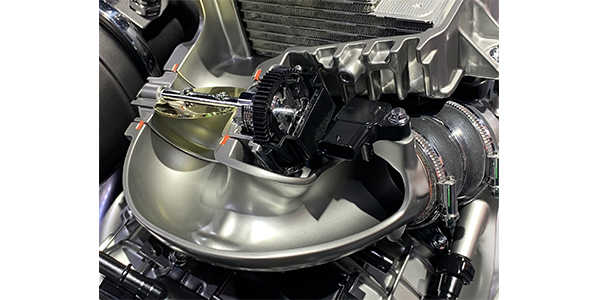
Throttle Control
Before the air reaches the combustion chamber, it has to pass through the throttle plate and intake valves. Managing these openings is critical to the performance and economy of an engine.
On older cable-operated systems, where the gas pedal pulled the throttle cable, the engine control module then had to fight the sudden throttle angle by adding more fuel and changing the ignition. The ECM was reacting and not harmonizing the components for fuel and air.
The throttle plate controls how much air enters the engine. With throttle-by-wire, the percentage of throttle commanded by the pedal almost never matches the percentage of the throttle opening at the butterfly. Even with the engine at idle, the throttle angle is always changing. When the pedal is pressed to the floor, the throttle opens so the air matches the fuel, engine speed and load. But, the throttle plate is just the first stop for the air.
Runners and Ports
The intake manifold is located between the throttle plate and intake valves. Modern intake manifolds have two tricks to control airflow.
Variable length intake runners change the length of the intake passages depending on engine speed and load. Typically, a longer runner produces more torque at lower engine speeds. Shorter runners produce more power at high engine speeds.
The other device being used by direct-injected engines is a valve positioned at the end of the intake runner before the intake valves. These valves control the size and shape of the intake port. They also help to create an intake manifold that is the right size for the demands on the engine. The valves help to tumble or swirl the air to decrease turbulence as air goes into the cylinder. They will close down the port at lower engine speeds and open fully as engine speeds and loads increase.
Various automakers have different names for the valve system. Hyundai calls it the Variable Charge Motion Actuator (VCMA). Volkswagen uses flaps that close down the ports on its direct-injected engines called the Variable Tumble System (VTS). Toyota calls it a tumble/swirl valve. The one thing these systems share is that they have plastic parts that can break and actuators that can fail. Some of them can be the source of a vacuum leak.
When these valves stop working, they can fail in the open or closed position. When the valve is stuck in the closed position, the engine could be starved for air and feel sluggish. If the valve is stuck in the open position, the engine could have poor idle quality and the engine could stumble under acceleration.
These systems typically have position sensors that will trigger codes if they see the actuator not moving at all or moving at a reduced rate. Some failures will cause misfires and fuel trims that might be too lean or too rich.
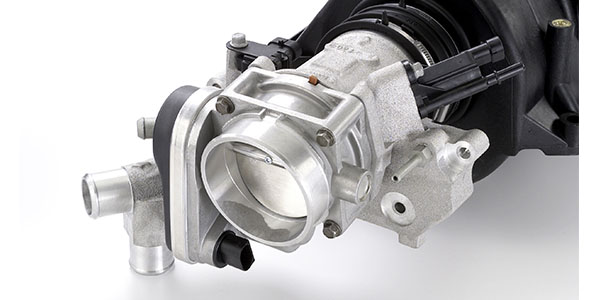
Variable Valve Timing
At lower engine speeds, a variable valve system on the intake camshaft opens the valves later during the intake stroke. This increases the vacuum and scavenging effect generated by the piston traveling downward in the cylinder. This improves idle quality and smooth power tip-in from a stop. As the engine rpm increases, the intake valves are opened earlier. This variability enhances torque as rpm increases.
At higher engine speeds, the valves open later for full power delivery so the scavenging effect of the exhaust leaving the cylinder can pull more air into the cylinder. The throttle-by-wire systems help to optimize the scavenging effect and how much stable air makes it into the cylinder.
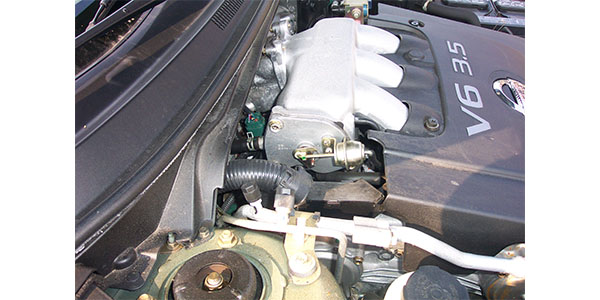
Working Together
The throttle-by-wire, intake manifold and variable valve timing components all work together to manage the air entering the cylinder. When something goes wrong with one element, it can influence the performance of the other components, what happens inside the combustion chamber and what the oxygen sensor reads in the exhaust gases.
When an air management component fails without direct component-related codes, it can make some technicians look at only the fuel and ignition components. Let’s face it, fuel and spark are easier to understand and see than air.
Diagnosing a driveability problem that involves the air management system requires the proper tools and repair information. A scan tool that can view the position and operation of the actuators can give essential access to data PIDS. Also, bi-directional controls to manually actuate solenoids and motors can confirm their operation. But, the most critical tool is your eye for inspection of the entire system.
SIDEBAR
Carbon Deposits and Throttle Angle
The throttle-by-wire system can also compensate for long-term conditions like small vacuum leaks and carbon buildup at the throttle body and intake valves. It does this by increasing the angle of the throttle plate. As carbon builds up or other conditions that change idle quality change, it can increase or decrease the angle of the plate.
When carbon and other deposits build up around the throttle plate, they restrict the air needed for idle. The response from the engine control computer is to increase the angle of the throttle to compensate. Some OEMs call this adaptive throttle control. But, if the values exceed a specified range, it may set a code. On some vehicles, as the throttle body is cleaned, the idle might be high or erratic.












